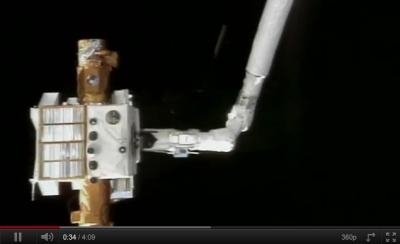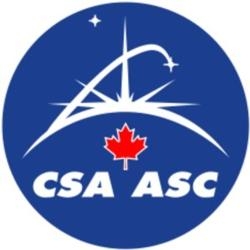Wed, Nov 09, 2011
Canadian Space Agency Salutes Three Decades Of Industry
Innovation
Canadarm, which many consider to be Canada's national icon of
technological innovation, made its space debut on the U.S. Space
Shuttle on November 13, 1981. Designed to deploy and retrieve space
payloads, the robotic arm quickly became a critical element in the
Space Shuttle Program. It worked flawlessly for 90 Shuttle
missions, spending a total of 944 days in space and travelling the
equivalent of over 387 million miles.

"It took incredible vision—and courage—to suggest an
element that would be both visible and critical to the Shuttle
program," said Steve MacLean, President of the Canadian Space
Agency (CSA). "The foresight of those early pioneers ended up
spawning decades of experience in on-orbit servicing for our
industry. The Canadarm became an enduring symbol of Canadian
ingenuity, and branded our country as a world leader in space-age
technology."
The CSA is working to ensure that the Canadarm, even on Earth,
continues to inspire future generations of Canadians. "We are
bringing Canadarm back to Canada," stated Steve MacLean. "Since it
was designed to work in the weightlessness of space and not on
Earth, the arm has to be modified for public display before it can
be installed at the CSA Headquarters. We will later evaluate
whether this national icon can be shared with Canadians in other
locations," explains MacLean.

Some of the Canadarm's most famous achievements include
retrieving the Hubble Space Telescope for repair, connecting the
two first modules of the International Space Station (ISS) and
inspecting the Shuttle's heat shield to ensure its safe return to
Earth. The design and construction of the Canadarm marked the
beginning of Canada's close collaboration with NASA in human space
flight, leading to the creation of Canada's corps of
astronauts.
While the Canadarm was retired after the Space Shuttle's final
flight in July 2011, the arm's legacy lives on through the suite of
Canadian robots on board the ISS, as well as the innovations in
robotic prototyping being done under the Next-Generation Canadarm
Program. The Canadarm has also inspired several generations of
scientists and engineers to develop new technologies for industry,
medicine, and other applications, such as neuroArm (an
ultra-precise robot for neurosurgery) and KidsArm for pediatric
surgery.
More News
Airport Marking Aids Markings used on runway and taxiway surfaces to identify a specific runway, a runway threshold, a centerline, a hold line, etc. A runway should be marked in ac>[...]
"It is extremely difficult, if not impossible, for manned aircraft to see a drone while conducting crop-enhancing and other aerial applications at low altitudes and high speeds. We>[...]
Aero Linx: The Skyhawk Association The Skyhawk Association is a non-profit organization founded by former Skyhawk Pilots which is open to anyone with an affinity for the A-4 Skyhaw>[...]
“The T-54A benefits from an active Beechcraft King Air assembly line in Wichita, Kansas, where all required METS avionics and interior modifications are installed on the line>[...]
Aero Linx: Aerostar Owners Association The Association offers the Aerostar Owner a unique opportunity to tap an invaluable source of information concerning the care and feeding of >[...]
 ANN's Daily Aero-Term (04.28.24): Airport Marking Aids
ANN's Daily Aero-Term (04.28.24): Airport Marking Aids Aero-News: Quote of the Day (04.28.24)
Aero-News: Quote of the Day (04.28.24) ANN's Daily Aero-Linx (04.28.24)
ANN's Daily Aero-Linx (04.28.24) Aero-News: Quote of the Day (04.29.24)
Aero-News: Quote of the Day (04.29.24) ANN's Daily Aero-Linx (04.29.24)
ANN's Daily Aero-Linx (04.29.24)




